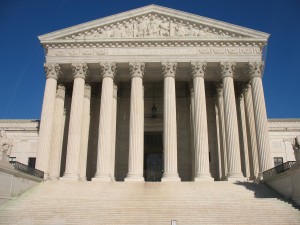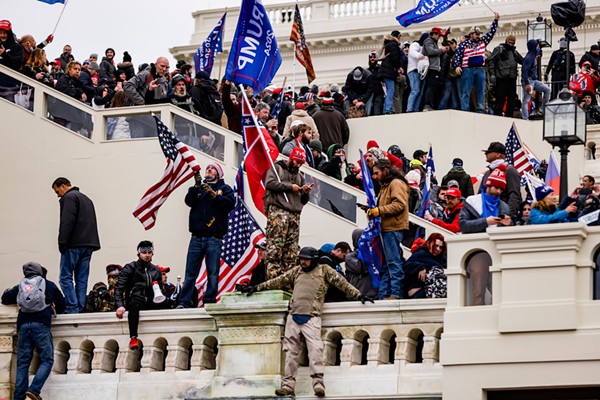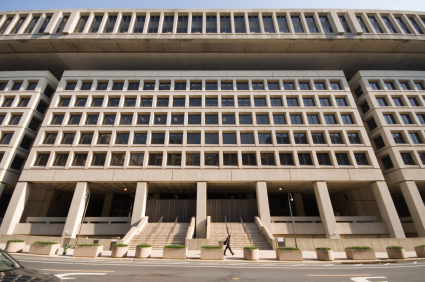Ross Parker was chief of the criminal division in the U.S. Attorney’s Office in Detroit for 8 years and worked as an AUSA for 28 in that office.
By Ross Parker
ticklethewire.com
Have the frenzied media coverage of incidents involving police shootings of African Americans and the protests of Black Lives Matter activists affected the Supreme Court? The Court has not addressed a case involving race and the criminal justice system in some time, but two such cases are scheduled for oral argument this month.
Coincidence or a legitimate attempt to weigh in on a crisis jeopardizing law enforcement lives and the faith of minority Americans in the fairness of the criminal process?
The Court exercises discretion in at least three ways: what cases to accept for hearing (only about 1% are heard), the timing of oral argument (these cases were set for the first month of the 2016-2017 term), and in the individual votes and opinions of the Justices). The first two seem to demonstrate a special sensitivity to this subject which is embroiling race relations in America.
However, the other related question is whether the open seat on the Court from the death of Justice Scalia will affect the Court’s ability to decide these cases and to resolve conflicts in the lower courts. A 4-4 vote will mean that the lower court decision will stand. In these two cases the lower courts both rejected the petitions of minority defendants on racial issues.
The first of the two cases is Buck v. Davis, a death penalty appeal which has bounced around the Texas state courts, the federal district court in Houston and the 5th Circuit since Buck’s sentence of death in 1996. Buck was convicted of capital murder of his ex-girlfriend and a man at her house in a jealousy-fueled shooting spree. During the penalty hearing his defense attorney, who had a notoriously bad record in capital cases, called a psychologist to testify on the subject of Buck’s likelihood of posing a danger in the future.
In Texas the jury must unanimously conclude that the defendant poses a danger of violence to warrant the verdict of death. The defense psychologist testified that the fact that he was Black made him statistically more likely to be dangerous. Ultimately, however, the psychologist was of the opinion that he was at a lower probability of being dangerous. His report, which included the race analysis, was admitted as a defense exhibit. The prosecutor reiterated this race opinion in cross-examination and the witness’s conclusion in his closing argument.

On the most recent appeal, the 5th Circuit concluded that, although racial appeals had long been unconstitutional in criminal trials, the defendant had not met the standard of a substantial showing of prejudice to justify a Certificate of Appeal. There had been no proof that the result would have been different without the expert’s testimony in view of the defendant’s callous actions and his lack of remorse. The defense showing on appeal was not extraordinary and the prejudice de minimis.
This particular psychologist had repeated this race-based statistical opinion in six other capital cases, and the Texas Attorney General announced in a press conference that it would not oppose re-sentencing in all of those cases. However, a new Attorney General reneged on this promise as to Buck’s case.
In addition to the race-based issue, the case illustrates the tension in capital cases between two important principles. In cases involving the death penalty errors in the trial are painstakingly reviewed and appellate opinions often reach to achieve due process. On the other hand, there is a need for finality in the resolution of criminal cases. The length of time capital defendants sit on death row today is considered by some to be a failure of finality in the system.
Prediction: The Court will set aside the death penalty. When the violation is one involving race, particularly in today’s atmosphere of distrust of law enforcement and the judicial system, the need for finality must give way. Race can play no contributing factor in a criminal verdict particularly involving the death penalty.
Five votes are needed in view of the shorthanded Court since a 4-4 tie will result in the 5th Circuit opinion becoming final. In a purely logical way the 5th Circuit opinion is persuasive that the district court has not abused its discretion in concluding that there has not been a sufficient showing that the result would have been different. But, as Justice Holmes pointed out, “The life of the law has not been logic: it has been experience.” Today’s experience of the lack of public confidence in the criminal justice system requires that race cannot be a part, in any form, in the criminal justice system.
Although this does not bear on the result of the appeal perhaps, from the viewpoint of a former prosecutor, there is an ethical perspective to the case as well. Prosecutors are expected to keep their word. The fact that the promise was made by a predecessor, even outside of the case record, does not alter that principle.
Literally thousands of hours of time and energy have been expended in this appeal just so that a Texas trial prosecutor does not have to have a short hearing on the question of dangerousness and risk that Buck’s punishment will not be death but life imprisonment. Once the former Texas AG vowed to allow re-sentencing in this context, his successor was bound to follow it and trust that a jury would make the right decision without someone improperly inserting race into the proceeding.
The second case before the Court this month involving a question of race in the criminal justice system is Pena v. Colorado, in which the issue is whether a verdict of conviction can be impeached by a racial statement during deliberations by one of the jurors.
Virtually all jurisdictions have a general rule of evidence which bars the impeachment of a jury verdict by a juror statement during deliberation. The question in this case is whether this no impeachment rule is constitutional under the 6th Amendment right to an impartial jury.
The evidence at trial was that in a girls bathroom at a racetrack south of Denver in 2007, a man entered and asked two teenaged sisters if they wanted to “party” with him. When they said no, he turned the lights off and groped each of them. The only evidence against the defendant was a police show-up identification by the sisters and their testimony as to the events in the bathroom. The defense was mistaken identification and an alibi witness who testified that the defendant was elsewhere when the assault took place.
During voir dire potential jurors stated that they could all be fair and had no feelings for or against the defendant. No specific question about racial bias was posed. The jury verdict was guilty on three misdemeanor charges, and the jury was hung on the felony sexual assault.
After the verdict two jurors told defense counsel that one of the jurors had expressed bias against the defendant on four occasions to the effect that the defendant had done it because he was Mexican and that Mexican men take what they want.
On appeal the Colorado Supreme Court split 4-3 in deciding that the trial court had properly barred the juror statement. The court followed the minority view that there should not be an exception to the no impeachment rule to prove racial bias during deliberations. Their reasoning was to protect the privacy and prevent harassment of jurors, preserve the public confidence of the validity of verdicts and to promote finality in the criminal justice system.
The minority opinion advocated the view of most courts which have considered the issue, that evidence of racism by jurors was admissible under the 6th Amendment. They concluded that this was necessary since the defense was unlikely to discover evidence of racial bias any other way and that the justifications of the majority opinion were not sufficiently important to protect a juror’s right to convict on the basis of race.
The Supreme Court has upheld the no impeachment rule on two occasions recently to preclude evidence of misconduct in the jury room, but these cases did not involve the important principle of race-blind decision making by impartial juries. And they did not take place in the present heated atmosphere of cries to remove all racial stereotypes in the administration of justice.
Prediction: The Court will reverse the defendant’s convictions and remand the case for consideration of the issue in light of the 6th Amendment’s requirement of jury impartiality.
The question as in the previous case is whether the absence of one Justice will affect the result. Although most Court opinions can stand on a one-vote difference between the majority and minority opinions (e.g., 5-4), these cases will require a two-vote majority (e.g., 5-3) in order to sustain the defendant’s argument since a 4-4 vote will allow the lower court ruling to stand.
Ordinarily this result would be a tall order for criminal defendants in the Supreme Court. But this is not an ordinary time in the perplexing confrontation between law enforcement and minorities. You have to believe that at least some of the Justices chose to hear these appeals as the first in the term for a reason.






